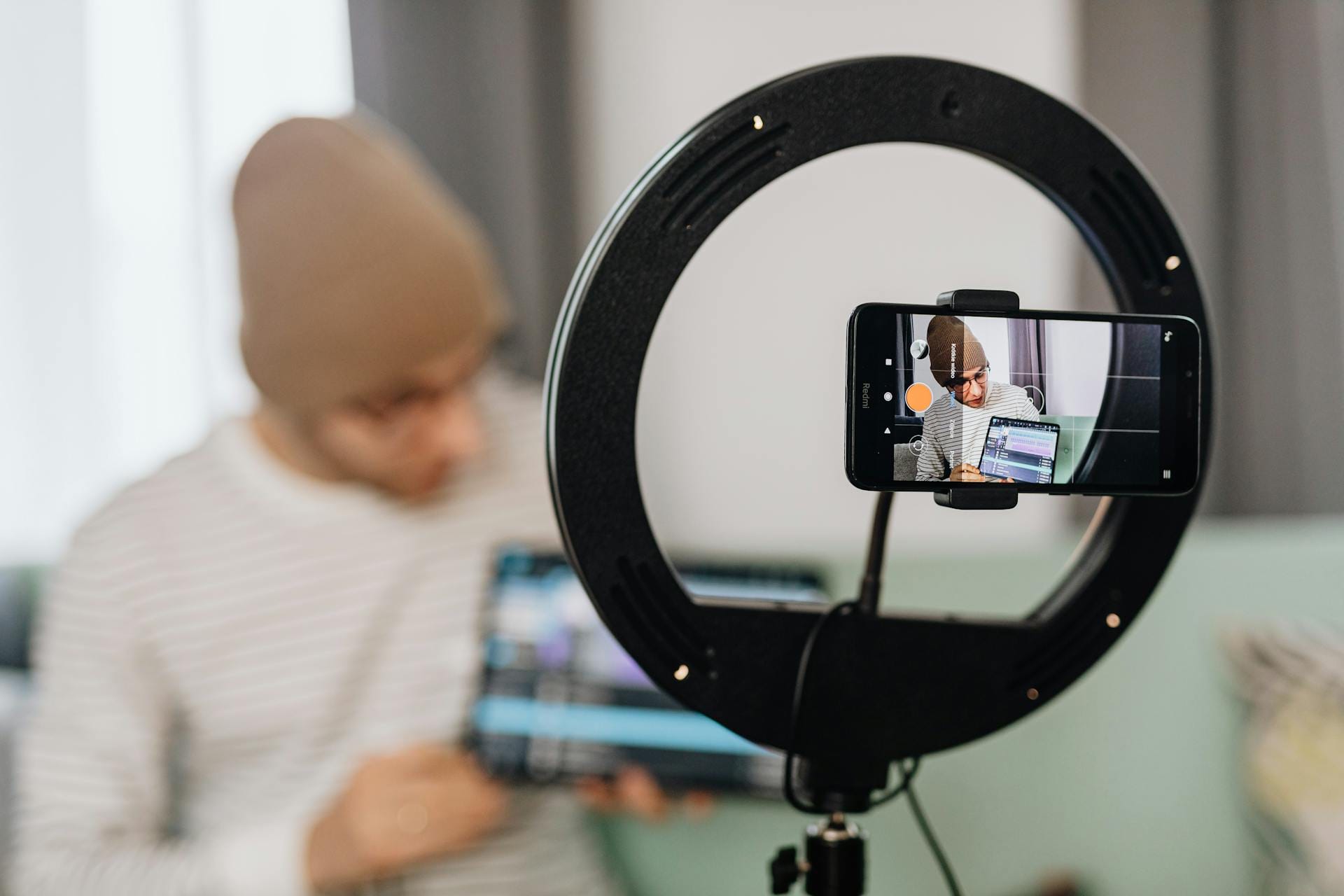
How to sell without high-pressure tactics or feeling sleazy
His name was Ron. He told me the job would be selling vacuum cleaners.
“There’s no way in hell you can ever get me to sell vacuum cleaners,” I said.
Then he rolled up the sleeve on his dress shirt to expose his Rolex watch. And he showed me photocopies of paychecks that people on his team cashed: $9,000, $12,000, I even remember seeing one for $30,000.
As a college student who only made 9 bucks an hour — tops — those checks were enticing.
So next thing I know, I’m selling vacuum cleaners.
My first sales call was a disaster.
I couldn’t assemble the darn vacuum. I got a face full of dust. And the prospects were pissed the entire time. The product was too expensive and there was “no way they would ever spend that much on a vacuum.” They kicked me out before I even got to the cool part of the demonstration.
I felt bad, so I returned everything to Ron the next day and told him I quit.
Ever since that time, sales left a bad taste in my mouth. I thought:
- It’s bothering people
- People don’t want to buy a bunch of stuff
- I can never sell anything because I’m not a smooth talker
But as I grew older and wiser, I realized that sales is essential to any business. And some of the best experiences I’ve ever had were the result of someone selling to me. For example:
- My accountant selling his services relieved me of headaches every quarter when I had to pay estimated taxes for my business
- A maid service let me get more work done, devote more time to hobbies, and make me feel like I live in an actual adult’s place
- Hiring a personal trainer helps me reach my fitness goals without worrying about injury from bad form or overtraining
In none of these cases did I feel l like I was losing anything by buying. It was the opposite. I felt a sense of relief wash over me. I thought, “Why didn’t I do this sooner?”
I’d wager that, if you have a valuable product or service, your customers feel the same way.
Today I want to show you how to sell anything without hard-pressure tactics or feeling sleazy.
Master these strategies, and you’ll get your product or service in the hands of more people than ever. And they’ll thank you for it.
So let’s get started.
Don’t be apologetic
Imagine you had to convince someone to try your favorite restaurant or listen to a great new artist you just discovered on Spotify. Would you be bashful about it?
Errr…this restaurant is okay. You can probably make the food on your own, but try it anyway! You might like it…I don’t know…
I like this music. You might not like it, but listen anyway. Maybe if you have time?
No way. You would unapologetically explain why your friend NEEDS to eat there. You’d talk about the atmosphere, service, and how amazing the food is.
You also wouldn’t hold anything back about the new artist. You’d explain why the sound is so distinct. Or compare this artist to another one that your friend loves.
It sounds silly when you put it this way. So why would you apologize to people before you pitch a product that can solve their problems?
Take Cal Newport and Scott Young. Normally we protect the innocent and don’t call people out for mistakes they made. But since they’re friends of GrowthLab, and we’ve pointed this out to them already, their example is a great one to learn from.
They released a course called Top Performer, which is all about using deliberate practice to master rare and valuable skills to get ahead in your career.
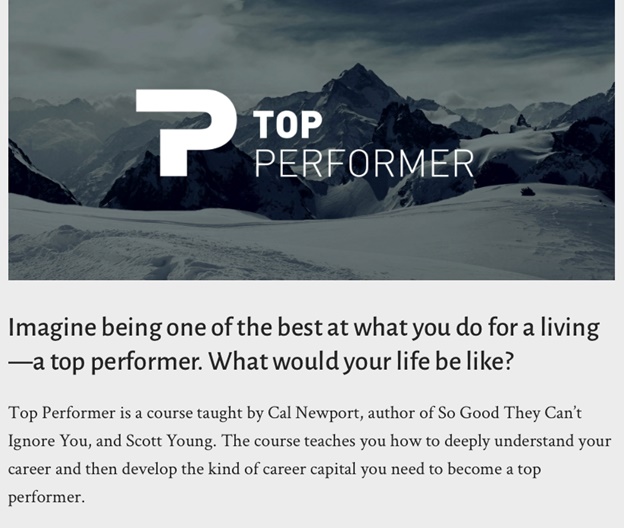
One of my friends (and a student in their pilot program) said it was amazing and one of the best courses they’ve ever taken.
But Cal and Scott didn’t sell it that way.
Here’s an apologetic call to action they posted:
While this message seems like a harmless public service announcement, it only brings out the complainers and freebie seekers.
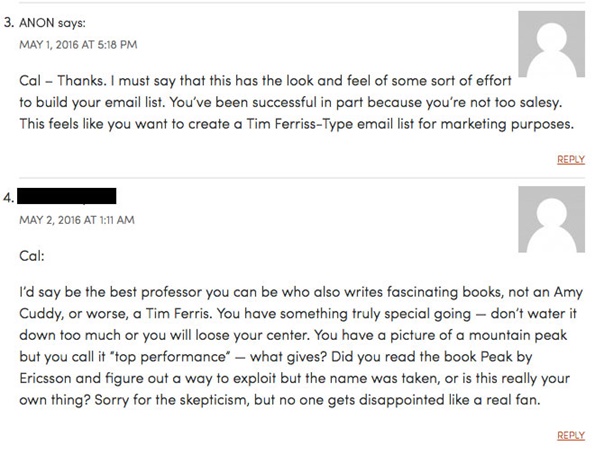
Look, the fact is, there are 5 types of people who will NEVER buy from you. Apologetic messages only seem to please the non-buyers. Their complaints poison the well for your real customers.
Your real customers will be relieved that you have something worthwhile for them. Just like I felt when I hired an accountant, maid, and personal trainer.
Luckily Scott found redemption when he posted this message on his blog:
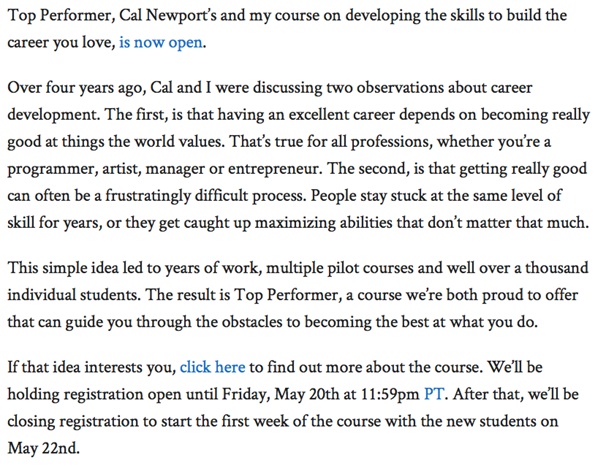
Notice how it’s not apologetic? And how it’s not a high-pressure sale? He’s just saying, “Hey, I put a lot of work into this thing. For the right people, I think it’ll be valuable. Check it out.” That’s all selling is.
Want to build a business that enables you to live YOUR Rich Life? Get my FREE guide on finding your first profitable idea.
The BANT formula that’ll boost your sales and prevent you from wasting time on non-buyers
During my first sales call — in my nightmare job of selling vacuum cleaners — I made the biggest rookie mistake ever: I sold to the wrong people.
If you’re pitching prospects regularly and not getting any bites, it’s time to take a step back.
The BANT formula can help you figure out if you’re going after the right people.
IBM developed this sales formula as they were becoming a powerhouse company. It helped their sales team avoid time-wasting calls and close more sales.
Here’s what it stands for:
B – Budget (Can the person afford it?)
A – Authority (Are they the decision maker?)
N – Need (Are you solving a problem?)
T – Timeframe (How long does the person have to decide?)
Let me walk you through each one using Cal and Scott’s Top Performer course.
Budget
Who are they targeting? Cal’s blog is all about getting more done in less time and becoming so good at your job that everyone wants to hire you. Scott writes about programming, travel, and learning languages.
So based on this, we can assume that their audience is motivated to learn new things. They’re probably employed but looking for more freedom in their lives.
And if the audience is employed, they have the budget to pay.
What if they were going after college students? Yes, college students might want to learn about everything that Cal and Scott teach, but they probably don’t have the money to spend.
If that were the case, it would be wise to move on and find a better audience.
Which is why Cal and Scott wrote an FAQ on their sales page that specifically tells college students “this course is NOT for you.”
Authority
This is important in business-to-business sales, but many people ignore it when selling to consumers.
It boils down to one question: Who is the decision maker?
In Scott and Cal’s case, the decision maker is the person with a credit card and bank account. Their audience has these things since they’re employed.
But what if they were selling to kids under 18? Ignoring any budget issues, would they have the authority to buy?
No way. They’d need their parents to help with paying and putting down credit card information.
If this was the case, their message would be geared toward parents. They’d explain why the course was beneficial to their kids in a way that parents care about.
Need
Is there a need for Cal and Scott’s course? Let’s take a look at a sales page excerpt to see who this is for:
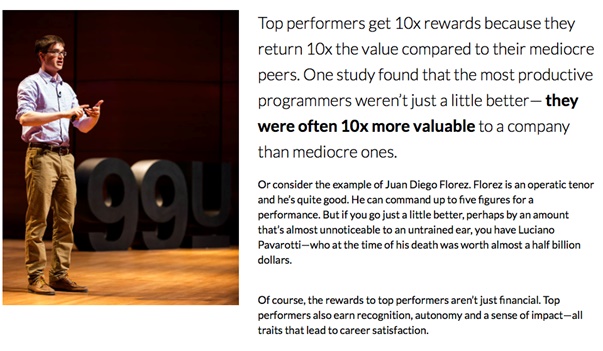
So they’re going after people who want to excel in their jobs, no matter what it is. They give the example of programmers and a musical performer along with the disproportionate rewards they get for being excellent at their craft.
Do people want to get paid more? Do they want to earn recognition for their work?
The answer to those questions is “yes.” So Cal and Scott are filling a need with their course.
Timeframe
This is an interesting one. It answers the question: “When does the prospect need everything by?”
If you’re driving around a car that works fine, but you’re looking to upgrade, you probably have a longer timeframe.
On the other hand, if your car just broke down and is beyond repair, you need one right away.
With Cal and Scott’s course, most people want to become a top performer quickly to reap the rewards of more money and recognition. But people have hesitations on buying expensive courses online. They wonder:
- Is this really different than a book off Amazon?
- What if I don’t like it?
- Am I getting ripped off?
Which is why Cal and Scott give people a guarantee.
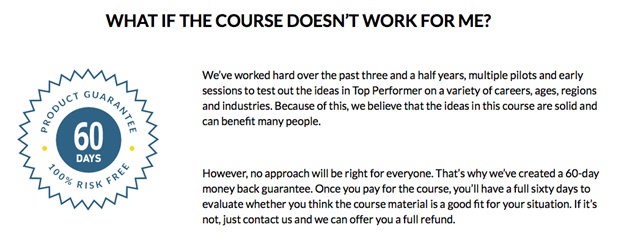
This answers any objections people might have about signing up. They also have a deadline to create scarcity:
Combined with the guarantee, this is very powerful. It’s telling people, “You have everything to gain in becoming a top performer and nothing to lose by trying it out.”
So the next time you sense that someone doesn’t want to be sold to, go through each part of this BANT formula. Chances are good you’re not in front of the right prospect.
Once you find the right audience selling, becomes a win-win situation for everyone. That’s not sleazy at all.



